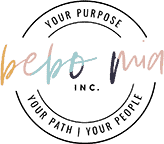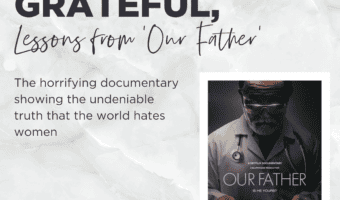[wpseo_breadcrumb]
How Our Rage Can Change the World
Anger can be tremendously powerful for those who identify as women but only if we are aware that we’re experiencing it and are interested in cultivating our capacity to harness it.
This can be a challenge in and of itself for many girls and women, especially Black girls and women and girls and women of color. H/t to Brittany Cooper who wrote an amazing book entitled Eloquent Rage: A Black Feminist Discovers Her Superpower that tackles this topic well. Rage, fury and anger are not typically emotions that girls and women are conditioned or encouraged to experience and express. Quite the opposite is true. We are conditioned to occupy the space of being calm, quiet, docile, amicable, accommodating, giving, comforting and kind. And when we step outside this very narrow social construct of what it means to be a “good” girl and/or woman, there are consequences ranging from judgment and social ridicule to ostracization and even violence. We are even fed inaccurate cultural messages about rage being bad or unhealthy for us, all in an effort to keep us calm and quiet.
We are here with a different message.
We want you to get mad. We want you to connect with these feelings (which you are often having but not naming or acknowledging) and we want you to do something about it. We want to harness our fury to create the much needed change we are all longing for.
Anger is helpful. According to Soraya Chemaly, speaker (she did an excellent TED Talk you can watch here), feminist, activist and author of the book Rage Becomes Her: The Power of Women’s Anger, anger is a signal emotion which alerts us to threats, indignity and harms. I would also add that anger is also a signal of boundary violations and that when we get angry, it’s a reflection of our intuition speaking to us. In other words, anger is a messenger, communicating vital information about our safety and well-being. Anger is not to be ignored.
Because of the bad reputation that anger has received – especially through messaging about and targeted at women who demonstrate anger – we almost automatically assume that experiences and expressions of anger are negative. It can be really challenging to unlearn messaging you’ve long integrated but this is your invitation to not only change your relationship with anger but to also reframe your understanding and perspective on it.
Like all emotions, anger is a neutral emotion. It’s not “good” or “bad” or inherently dangerous or aggressive; it is just an emotion like any other. It means nothing about you as the person experiencing it and it’s just as legitimate a feeling as happiness, sadness, grief, loneliness and so on. And importantly, you get to decide how you want to proceed and express whatever emotions you are feeling.
So how do we change our relationship with anger and rage?
And how can we use our anger for change? These are great questions and we have some ideas on how these strides can be made.
We genuinely believe that it starts with accurately recognizing and naming our feelings in real time. This will take a heightened sense of self-awareness and practice, especially for those of us who have been stifling, diminishing and stuffing down our emotions for years. Here are some questions to ask yourself:
- How am I feeling at this moment?
- What am I feeling at this moment?
- Can I feel this anywhere in my body?
- What is the root of my emotion?
- What prompted this feeling?
- What would I like to do with this emotion?
Being able to accurately identify and name our feelings is the first step in being able to create a safe and healthy relationship to all our feelings, especially anger. For many girls and women, we’ve been talked out of our feelings of rage for so long (for many, lifetimes), that we often (probably more than we even realize) mis-label our feelings and instead of naming anger, we say we’re feeling frustrated, annoyed or sad. While we may be feeling these things, we are also likely feeling anger alongside them but aren’t able to name and identify this.
Now once we’ve identified it, we get to choose how to express it.
Many of us, often informed by our own experiences being on the receiving end of anger, have negative associations with anger and assume that it always accompanies aggression, raised voices and violence. These can be challenging associations to untangle but it’s important to remember that while anger might have been present for experiences of aggression and violence, these are not mutually exclusive dynamics. Anger can be expressed clearly, directly and effectively without aggression, harm and violence. There are many healthy expressions of anger and naming it and sharing it are great examples of this.
For many of us reading this and many of those in the birth work space, we have all likely encountered various barriers that have stood in our way. This could be around access to resources, systemic oppression or not receiving proper medical care because of the color of our skin or size of our body. Often, we are attracted or drawn to a certain type of work or a specific mission or movement because of the injustices at play; we show up because we want to make things better and different. What’s important to realize in this experience is while you may feel inspired to create change, the root of that inspiration may actually be rage. And that’s okay! Embrace it and continue to allow it to fuel your passion for change!
Anger becomes tricky for us when it remains unexpressed in our bodies and when we spend too much time enraged, without an appropriate or helpful outlet. There can also be times as girls and women when it is physically unsafe to express our anger in the moment as it may result in harm to us. But for a lot of us, a lot of the time, when we swallow our anger, it’s usually because we don’t want to rock the boat, make it “uncomfortable” for others or because we worry what others will think of us. These are the times when expressing our anger is important and this is why it is vital not only to name but to express what’s happening for you, where possible in real time. And then, to do something about it.
This does not have to be as grandiose as changing careers, becoming a full-time activist or birthing a movement (though it can!). We have many examples in history of how powerful it is when women come together, united in anger, to make change happen. The Women’s March is a great example. In book club last month (April 2022), we discussed the book Good and Mad: The Revolutionary Power of Women’s Anger by Rebecca Traister, which provided numerous historical examples of how women’s anger propelled action, movement and change.
We also love, love the book by Darcy Lockman, PhD called All the Rage: Mothers Fathers and the Myth of Equal Partnership. You can also listen to the Hot+Brave podcast where we had the pleasure of having Darcy as a guest – check that out here.
Cultivate safe, angry spaces
In addition to cultivating a healthy relationship with anger in your life, another step towards change is to initiate and encourage not only conversations but expressions of anger with the girls and women in your life. Normalize this emotional experience and demonstrate that anger can be powerful and expressive without being violent and destructive. We will always be more powerful together so creating spaces to safely express, communicate and model anger is powerful.
Tune into what makes you mad
You probably already have a clear sense of what this is but if you haven’t been connected with your anger, you may experience it as irritation/annoyance/frustration. Once you’re at the root of the anger, try to take some kind of action on it. If you have been spoken to disrespectfully by a male teacher at your kids school, address it. If your doctor speaks over you or dismisses your concerns on the regs, file a complaint and find a new doctor. If you’re mad about the potential for Roe to be overturned, speak out about it, donate to an abortion provider, and petition your local government. If you’re mad about the dangerous misinformation that exists in the world about alcohol consumption (like me), educate yourself and then start an education campaign to share accurate, evidence-based information. It doesn’t have to be huge but taking a step, fuelled by anger, is not only helpful but healing.
At their root, these are expressions of anger, even if it doesn’t always appear that way. Anger can take many shapes and forms and becomes the most powerful when we can name it, express it and wield it to support our cause.
We want to invite you to really take a look at how rage and anger show up in your life. Are there areas where you would benefit from getting your anger out? Can you put your anger to good use to create change in an area that needs it? What does unapologetic anger look like for you?
Anger is okay.
Anger is healthy.
Anger is helpful.
Anger is powerful.
And together, a group of aware, angry girls and women are unstoppable.
Xoxo,
PS – we have links that may be attached to affiliate programs in this post and we may make a commission from your purchases.

FREE ONLINE MINI-COURSE
BLISS IN BUSINESS RETREAT
Your future is created by what you do today — that's why we created a completely FREE mindset mini-course to help doulas and birth workers find bliss in their business!







